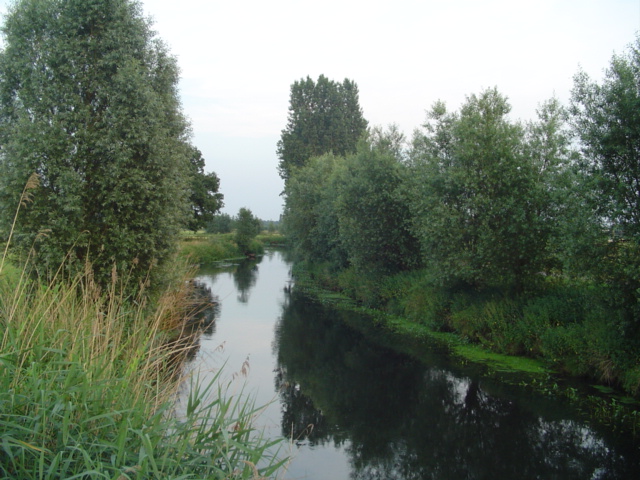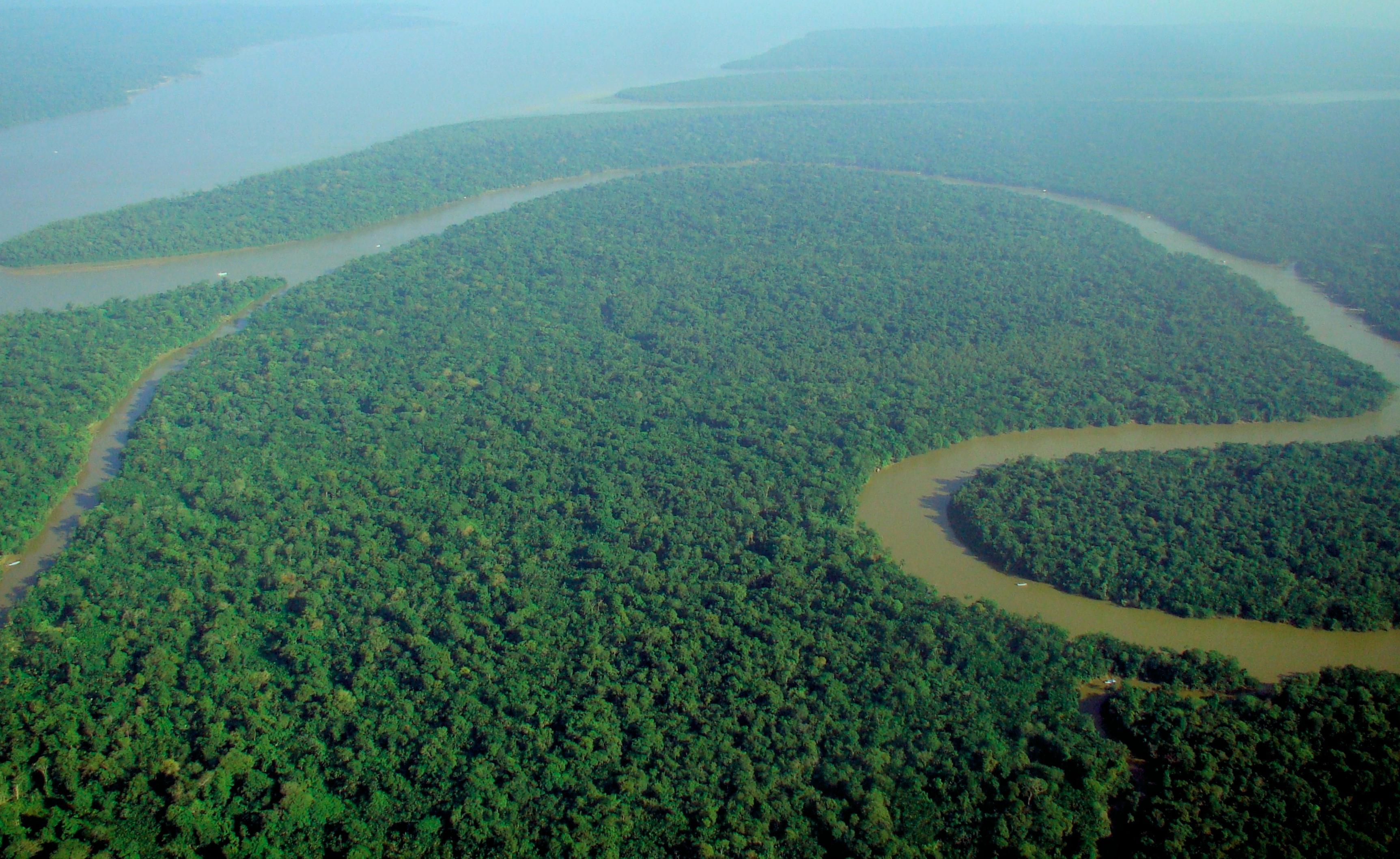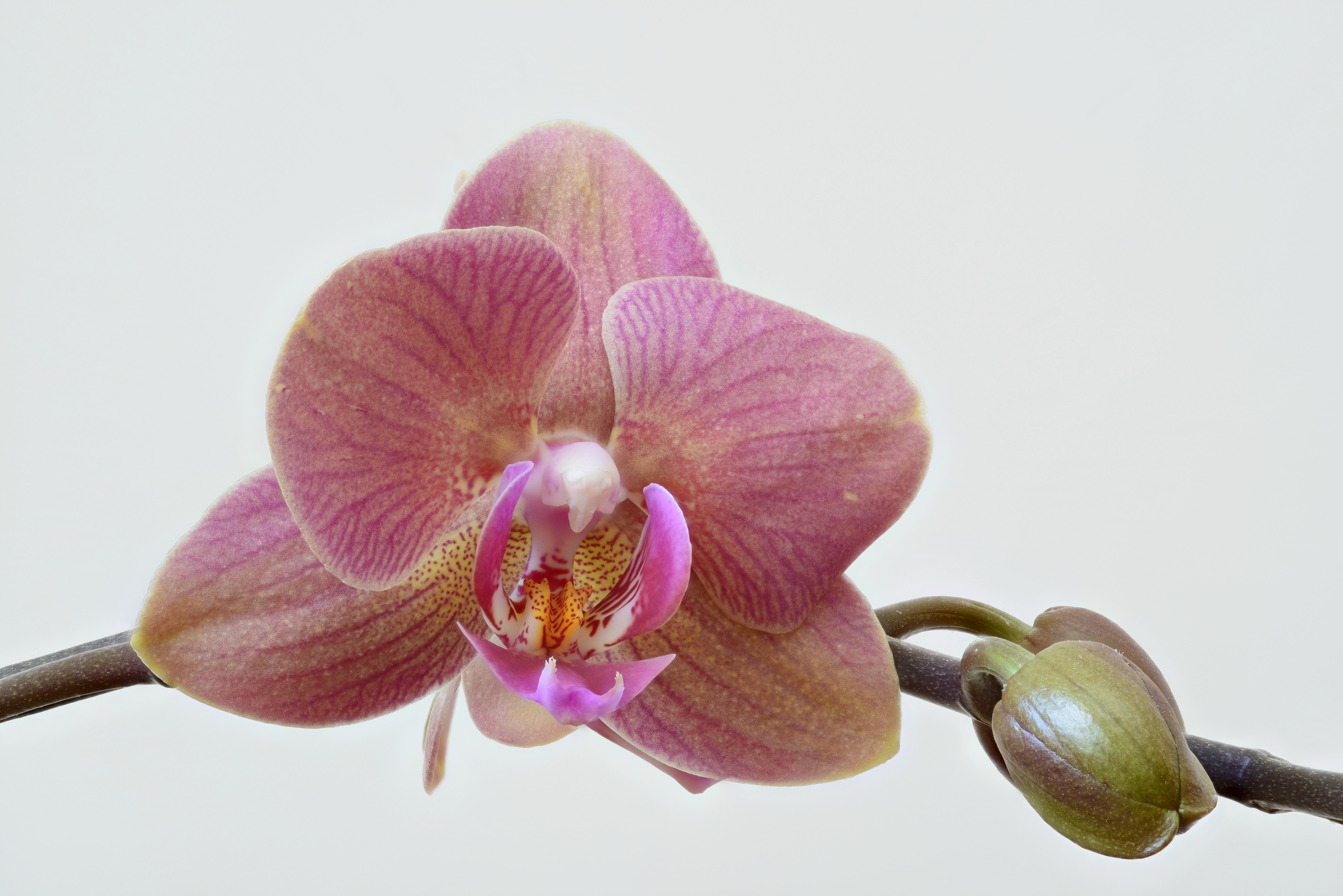|
Dommelbeemden
The Dommelbeemden are, along with the Moerkuilen a forestry area in a bend of the Dommel river northeast of Nijnsel in Meierijstad. It is located at the Lieshoutse Dijk, not far from the A50 motorway. The protected area measures over 100 acres. The Dommelbeemden are part of the larger area Het Groene Woud. This diverse area was designated as a natural monument in 1977. The most original part and natural state of the Dommel can be found between Eindhoven and Boxtel and hence in the Dommelbeemden. Here the Dommel has still its original winds and meanders and forms a cultural-historical and valuable landscape area. The Dommelbeemden consist of species-poor meadows with willows and include Rhinanthus, rattles and orchids. There are wet meadows in which rare plants such as Marsh Lousewort can be found. A clogging old meander of the Dommel there is filled with Nymphaeaceae, water lilies. At a higher elevation, which is part of the Central Brabant Sand Ridge, there are traditional "bola ... [...More Info...] [...Related Items...] OR: [Wikipedia] [Google] [Baidu] |
Moerkuilen
The Moerkuilen are, along with the Dommelbeemden a forestry area in a bend of the Dommel river north east of Nijnsel in Meierijstad. It is located at the Lieshoutse Dijk, not far from the A50 motorway. The protected area measures over 100 acres and connects with the Vresselse Bossen (Vresselsh Forests) in the south. The Moerkuilen are part of the larger area Het Groene Woud. The lake in a lowland peat soil, was created by the dredging of Moer, which is quagmire consisting of decayed plant material that could be used as peat (fuel) after drying. The Moerkuilen borders the Dommelbeemden. It is a Fen, moore lake in the Dommel valley, and is known for Nymphaeaceae, water lilies, potamogeton, calla and carex species. Around the fish-rich peat lake, which attracts many birds, is a swamp forest (Carr (landform), carr) bordered by forestry river dunes. There is a varied flora including common cow wheat and may lily. The river Dommel streamed past it over a higher plateau. Because of this ... [...More Info...] [...Related Items...] OR: [Wikipedia] [Google] [Baidu] |
Dommel
The Dommel is a small river in Belgium and the Netherlands, left tributary of the Dieze. It is 120 km long, of which 85 km are in the Netherlands. The Dommel takes in water from the Keersop, Tongelreep, Run (stream), Run, Gender (stream), Gender and Kleine Dommel streams and merges at 's-Hertogenbosch with the Aa (Meuse), Aa stream to form the river Dieze, which subsequently flows towards the Meuse. The main cities and towns along the Dommel's course are Peer, Neerpelt, Valkenswaard, Dommelen, Eindhoven, Son en Breugel, Sint-Oedenrode, Boxtel, Sint-Michielsgestel and 's-Hertogenbosch. Drainage basin The drainage basin of the Dommel belongs to that of the Meuse. To the west of is the basin of the Donge (river), Donge, which also belongs to that of the Meuse. To the south the basin of the Dommel borders that of the Schelde. To the east is that of the Aa. Further to the south a number of rivers flow into the Meuse much further upstream. History Former glory The Dommel often lo ... [...More Info...] [...Related Items...] OR: [Wikipedia] [Google] [Baidu] |
Nijnsel
Nijnsel (East Brabantian, North Meierijs dialect: ''Nènzûl'' ) is a village in the province of North Brabant, located in the Meierij of 's-Hertogenbosch. Nijnsel is a parish of the municipality of Meierijstad. Etymology The word Nijnsel means ''new residence'' ("nij" mening new, "sel" meaning residence). The name of the nearby hamlet Vressel means ''Old residence''. "Sel" being derived from the word "sale", which refers to the largest house in the area which belonged to the local nobleman in the early medieval period. History Source: The hamlets Nijnsel and Vressel on either side of the Dommel river are known to be habituated in prehistoric times. There are archaeological remains of the Bell Beaker culture and also remains of the Roman Empire, Roman era were found. There are numerous archaeological monuments which also remain from the Mesolithic era. A settlement from the early Bronze Age, around 1500 BC was excavated in Nijnsel. Nijnsel originated as a settlement around a c ... [...More Info...] [...Related Items...] OR: [Wikipedia] [Google] [Baidu] |
Forests Of The Netherlands
A forest is an ecosystem characterized by a dense community of trees. Hundreds of definitions of forest are used throughout the world, incorporating factors such as tree density, tree height, land use, legal standing, and ecological function. The United Nations' Food and Agriculture Organization (FAO) defines a forest as, "Land spanning more than 0.5 hectares with trees higher than 5 meters and a canopy cover of more than 10 percent, or trees able to reach these thresholds '' in situ''. It does not include land that is predominantly under agricultural or urban use." Using this definition, '' Global Forest Resources Assessment 2020'' found that forests covered , or approximately 31 percent of the world's land area in 2020. Forests are the largest terrestrial ecosystems of Earth by area, and are found around the globe. 45 percent of forest land is in the tropical latitudes. The next largest share of forests are found in subarctic climates, followed by temperate, and subtro ... [...More Info...] [...Related Items...] OR: [Wikipedia] [Google] [Baidu] |
Staatsbosbeheer
Staatsbosbeheer, founded in 1899, is a Dutch government organization for forestry and the management of nature reserves. Staatsbosbeheer currently oversees over 250,000 hectares of land in the Netherlands. Usually this land is open to the public for recreational purposes, but restrictions often apply. Examples are the compulsory use of a leash when bringing a dog, or daytime access only. The organization has been criticized for not taking close enough care of its lands, or for interfering with political decisions, but news reports are generally positive or simply report public service announcements from the organization. Example:De ruigpootuil broedt weer in Nederland. (July 28, 2008). ''NOS''. Retrieved July 31, 2008. While the literal translation of the name would be 'State Forest Management', forests make up only 900 square kilometres of the total land under supervision. The remaining land consists of various landscapes, such as dunes, polders and wetland A wetland is a d ... [...More Info...] [...Related Items...] OR: [Wikipedia] [Google] [Baidu] |
Vresselse Bossen
East of the village of Nijnsel and the hamlet of Vressel, both in Meierijstad, North Brabant, Netherlands, is the location of the Vresselse bossen or ''Vresselsche Bosch'' (Vressels Forest). The Vresselse Bossen is a forest area of 241 ha. It is owned and managed by the National Forest Service (Staatsbosbeheer). The forest is named after the nearby hamlet of Vressel. It is a young forest that planted in a drift-sand ridge. At the beginning of the 20th century, there was scarcely a tree in the area. The area consisted mainly of dunes and heathland. At the edges of the area lived farmers who were severely affected by the shifting sands. To protect the fields was therefore decided to reforest the drift-sand. At that time, almost exclusively pine was used for the reforesting. In the 1920s, it had become a production forest consisting of Scots pine for the Limburgian mines. Within the area, there are two main fen systems: The Hazenputten and the Oude Putten. Rare vegetation is fou ... [...More Info...] [...Related Items...] OR: [Wikipedia] [Google] [Baidu] |
Carr (landform)
A carr is a type of waterlogged wooded terrain that, typically, represents a Ecological succession, succession stage between the original reedy marsh and the likely eventual formation of forest in a sub-maritime climate.Whittow, John (1984). ''Dictionary of Physical Geography''. London: Penguin, 1984. . Carrs are wetlands that are dominated by shrubs rather than trees. The carr is one stage in a hydrosere: the progression of vegetation beginning from a terrain submerged by fresh water along a river or lake margin. In sub-maritime regions, it begins with Reed bed, reed-marsh. As the reeds decay, the soil surface eventually rises above the water, creating fens that allow vegetation such as sedge to grow. As this progression continues, riparian zone, riparian trees and bushes appear and a carr landscape is created – in effect a wooded fen in a waterlogged terrain. At this stage, overall, unlike the overwhelming acidity of decaying reeds, the pH is not too acidic and the soil is not ... [...More Info...] [...Related Items...] OR: [Wikipedia] [Google] [Baidu] |
Field (agriculture)
In agriculture, a field is an area of land, enclosed or otherwise, used for agricultural purposes such as cultivating crops or as a paddock or other enclosure for livestock. A field may also be an area left to lie fallow or as arable land. Many farms have a field border, usually composed of a strip of shrubs and vegetation, used to provide food and cover necessary for the survival of wildlife. It has been found that these borders may lead to an increased variety of animals and plants in the area, but also in some cases a decreased yield of crops. Paddock In Australian English, Australian and New Zealand English, any agricultural field may be called a ''paddock'', especially if for keeping sheep or cattle. If stock are grazed there, the space may be called a ''run'', e.g. ''sheep run''; ''cattle run''. The term paddock is used more specifically in animal husbandry for a system in which grazing land is divided into small areas, paddocks, and the stock graze each paddock in tur ... [...More Info...] [...Related Items...] OR: [Wikipedia] [Google] [Baidu] |
Nymphaeaceae
Nymphaeaceae () is a family of flowering plants, commonly called water lilies. They live as rhizomatous aquatic herbs in temperate climate, temperate and tropical climates around the world. The family contains five genera with about 70 known species. Water lilies are rooted in soil in bodies of water, with leaves and flowers floating on or rising from the surface. Leaves are oval and heart-shaped in ''Barclaya''. Leaves are round, with a radial notch in ''Nymphaea'' and ''Nuphar'', but fully circular in ''Victoria (plant), Victoria'' and ''Euryale ferox, Euryale''. Water lilies are a well-studied family of plants because their large flowers with multiple unspecialized parts were initially considered to represent the floral pattern of the earliest flowering plants. Later genetic studies confirmed their evolutionary position as basal angiosperms. Analyses of floral morphology and molecular characteristics and comparisons with a sister taxon, the family Cabombaceae, indicate, h ... [...More Info...] [...Related Items...] OR: [Wikipedia] [Google] [Baidu] |
Wet Meadow
A wet meadow is a type of wetland with soils that are Solubility, saturated for part or all of the growing season which prevents the growth of trees and brush. Debate exists whether a wet meadow is a type of marsh or a completely separate type of wetland. Wet prairies and wet savannas are hydrologically similar. Hydrology and ecology Wet meadows may occur because of restricted drainage or the receipt of large amounts of water from rain or melted snow. They may also occur in riparian zones and around the shores of large lakes. Unlike a marsh or swamp, a wet meadow does not have standing water present except for brief to moderate periods during the growing season. Instead, the ground in a wet meadow fluctuates between brief periods of Flood, inundation and longer periods of Hydric soil, saturation. Wet meadows often have large numbers of wetland plant species, which frequently survive as buried seeds during dry periods, and then regenerate after flooding. Wet meadows therefore do ... [...More Info...] [...Related Items...] OR: [Wikipedia] [Google] [Baidu] |
Lousewort
''Pedicularis'' is a genus of perennial green root parasite plants currently placed in the family Orobanchaceae (the genus previously having been placed in Scrophulariaceae ''sensu lato''). Uses Pedicularis is used medicinally in teas and smoking blends. Taxonomy The common name lousewort, applied to several species, derives from an old belief that these plants, when ingested, were responsible for lice infestations in livestock. The genus name ''Pedicularis'' is from the Latin ''pediculus'' meaning louse. Over 600 species are accepted, mostly from the wetter northern temperate zones, as well as from South America. The highest diversity is in eastern Asia, with 352 species accepted in China alone. Selected species *'' Pedicularis attollens'' (little elephant's head) *''Pedicularis bhutanomuscoides'' *'' Pedicularis bracteosa'' (fern-leaf, towering, or bracted lousewort) Pedicularis caeruleoalbescens Wendelbo *''Pedicularis cacuminidenta'' *''Pedicularis canadensis'' (Cana ... [...More Info...] [...Related Items...] OR: [Wikipedia] [Google] [Baidu] |
Orchids
Orchids are plants that belong to the family Orchidaceae (), a diverse and widespread group of flowering plants with blooms that are often colourful and fragrant. Orchids are cosmopolitan plants that are found in almost every habitat on Earth except glaciers. The world's richest diversity of orchid genera and species is in the tropics. Orchidaceae is one of the two largest families of flowering plants, the other being the Asteraceae. It contains about 28,000 currently accepted species in 702 genera. The Orchidaceae family encompasses about 6–11% of all species of seed plants. The largest genera are ''Bulbophyllum'' (2,000 species), ''Epidendrum'' (1,500 species), ''Dendrobium'' (1,400 species) and '' Pleurothallis'' (1,000 species). It also includes ''Vanilla'' (the genus of the vanilla plant), the type genus '' Orchis'', and many commonly cultivated plants such as '' Phalaenopsis'' and '' Cattleya''. Moreover, since the introduction of tropical species into cultivation ... [...More Info...] [...Related Items...] OR: [Wikipedia] [Google] [Baidu] |







